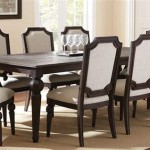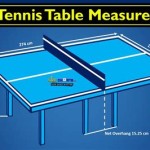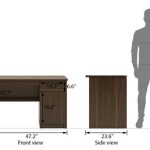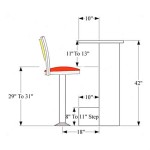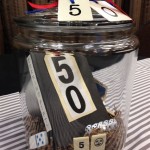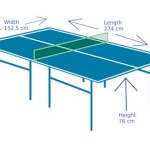World Market Drafting Table Assembly Instructions: A Comprehensive Guide
The World Market drafting table is a popular choice for artists, architects, and designers due to its blend of functionality and aesthetic appeal. However, assembling this piece of furniture can present a challenge if the instructions are not followed carefully. This article provides a comprehensive, step-by-step guide to assembling a World Market drafting table, ensuring a smooth and successful setup process. Understanding the nuances of each stage is crucial for achieving a stable and functional workspace.
Before beginning the assembly process, it is imperative to inventory all components to ensure no parts are missing. The packaging should contain the tabletop, the legs (typically four), crossbars or support beams, hardware (screws, bolts, washers, and possibly Allen wrenches), and the assembly instructions. If any parts are missing, contact World Market customer service or the retailer immediately. This prevents frustration and delays later in the assembly process.
The tools required for assembly may vary depending on the specific model, but generally, a Phillips head screwdriver, a flathead screwdriver, and potentially a wrench (if the hardware includes bolts and nuts) are necessary. A rubber mallet can also be helpful for tapping components into place without damaging them. A level is crucial to ensure the drafting table is stable once assembled. Laying out all the parts and tools in an organized manner before starting will streamline the process.
Key Point 1: Assembling the Base Structure
The initial stage involves assembling the base structure of the drafting table. This typically involves connecting the legs to each other using crossbars or support beams. The specific configuration will vary depending on the model, but the general principle remains the same: create a stable and rigid foundation for the tabletop.
Begin by identifying the legs and crossbars. The instructions will typically indicate which crossbars are intended for the front, back, and sides of the table. Align the crossbars with the designated attachment points on the legs. These attachment points are usually pre-drilled holes or brackets. Insert the appropriate screws or bolts through the holes and tighten them securely. Avoid overtightening, as this could strip the threads or damage the wood.
Ensure that the legs are oriented correctly before attaching the crossbars. Some legs may have features, such as leveling feet or decorative elements, that need to be positioned in a specific direction. Refer to the assembly instructions for clarification. Once the crossbars are attached, the base structure should be relatively stable, but it may still be somewhat wobbly until the tabletop is installed.
If the drafting table design incorporates a footrest bar, it is typically installed at this stage. The footrest bar usually connects to the legs near the bottom, providing a comfortable resting place for the user's feet. Follow the instructions carefully to ensure the footrest bar is positioned correctly and securely attached.
After assembling the base, double-check all connections to ensure they are tight and secure. A loose connection can compromise the stability of the table and potentially lead to damage or injury. Use a level to verify that the base is sitting evenly on the floor. If necessary, adjust the leveling feet (if present) to compensate for uneven surfaces. This step is crucial for creating a stable and ergonomic workspace.
Key Point 2: Attaching the Tabletop
Once the base structure is assembled and stable, the next step is to attach the tabletop. This is a critical stage, as the tabletop is the primary working surface of the drafting table. Ensure the tabletop is aligned correctly with the base and securely fastened to prevent movement or wobbling.
Carefully position the tabletop on top of the assembled base structure. Align the edges of the tabletop with the edges of the base, ensuring that the overhang is even on all sides. Most World Market drafting tables have pre-drilled holes on the underside of the tabletop that correspond to attachment points on the base. If these holes are present, align them carefully before proceeding.
Insert the appropriate screws through the pre-drilled holes and into the corresponding attachment points on the base. Use a Phillips head screwdriver to tighten the screws securely. Avoid overtightening, as this could damage the tabletop or strip the threads. If the tabletop does not have pre-drilled holes, the instructions may direct the consumer to use self-tapping screws or other specialized hardware.
Some World Market drafting tables have mechanisms for adjusting the angle of the tabletop. If this is the case, follow the instructions carefully to install the adjustment mechanism. This may involve attaching hinges, brackets, or other hardware to the tabletop and base. Ensure that the adjustment mechanism is functioning smoothly and properly before proceeding.
After attaching the tabletop, double-check all connections to ensure they are tight and secure. Gently rock the tabletop back and forth to check for any movement or wobbling. If any movement is detected, tighten the screws or bolts until the tabletop is firmly attached to the base. A stable and secure tabletop is essential for comfortable and accurate drafting work.
Some drafting tables come with additional features or accessories, such as pencil trays or storage compartments. These are typically attached to the tabletop at this stage. Follow the instructions carefully to install these accessories in the designated locations. Ensure that the accessories are securely attached and do not interfere with the functionality of the drafting table.
Key Point 3: Final Adjustments and Inspections
After the base and tabletop are assembled, the final stage involves making any necessary adjustments and conducting a thorough inspection to ensure the drafting table is stable, functional, and safe. This includes checking the alignment, tightening all hardware, and testing any adjustable features.
Begin by visually inspecting the entire drafting table for any misalignments or defects. Ensure that the legs are aligned evenly, the tabletop is centered on the base, and all components are securely attached. If any misalignments are detected, loosen the corresponding hardware and make the necessary adjustments. Tighten the hardware after the adjustments are complete.
Double-check all screws, bolts, and other hardware to ensure they are properly tightened. Use a screwdriver or wrench to tighten any loose connections. Avoid overtightening, as this could damage the wood or strip the threads. A properly tightened connection provides stability and prevents the drafting table from wobbling or collapsing.
Test any adjustable features of the drafting table, such as the tabletop angle adjustment mechanism. Ensure that the adjustment mechanism is functioning smoothly and properly. Adjust the tabletop angle to different positions and verify that it locks securely in each position. If the adjustment mechanism is not functioning correctly, consult the assembly instructions or contact World Market customer service for assistance.
If the drafting table has leveling feet, use a level to verify that the tabletop is perfectly horizontal. Adjust the leveling feet as necessary to compensate for any unevenness in the floor. A level tabletop is essential for accurate drafting work and prevents items from rolling off the surface.
Finally, conduct a safety inspection of the drafting table to identify any potential hazards. Ensure that all edges and corners are smooth and free of sharp edges. Check for any protruding hardware or loose components that could pose a risk of injury. Address any safety concerns before using the drafting table. Cleaning the table with a damp cloth is also a good practice to remove any dust or debris accumulated during the assembly process.

Studio Designs Vintage Wood Drawing Drafting Table With 36 In Wide Adjustable Top 13334 The Home Depot

Drafting Table Assembly Guide Stand Up Desk

Litton Lane 51 In Brown Rectangle Teak Industrial Dining Table Seats 4 88580

San Diego Furniture For Drafting Table Craigslist

Hq Insight Table Upgrade For Sweet Sixteen

Yaheetech Minimalist Drafting Table For Artists Basic Drawing Deck White

Advantages Of Using Draftsman To Create A Pcb Assembly Drawing Design Outputs

Quilt Sew Add A Table

Litton Lane 51 In Brown Rectangle Teak Industrial Dining Table Seats 4 88580

Instructions Are Easy The Pcb Assembly Drawing Blog Altium Designer

